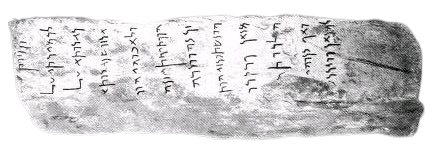 |
| The interior of the house of a Christian family in Jerusalem, ca. 1850. |
You may ask how serious all this can be. After all, Aramaic (or Syriac, as it also is called), though once dominant throughout the Middle East before being pushed out by Arabic, has not been spoken in the Galilee, or anywhere else in Israel, for centuries. (Although no one knows exactly when its last speakers vanished, this was clearly long ago.) In another generation or two, indeed, it may no longer be spoken by anyone anywhere, because it is faced with the prospect of extinction. The number of its users, formerly many millions, has dwindled to a few hundred thousand, nearly all of whom are bilingual and many of whom are raising their children in Arabic. Moreover, these speakers divide into two main populations — a larger one, mostly in northern Iraq, speaking “eastern Aramaic,” and a much smaller one in southwestern Syria, speaking “western Aramaic” — both of which are living in war zones and have been badly affected by the fighting. Almost entirely Christian, they have been targeted by Islamic forces and many have fled or immigrated to places where Aramaic is not spoken.
Read more
